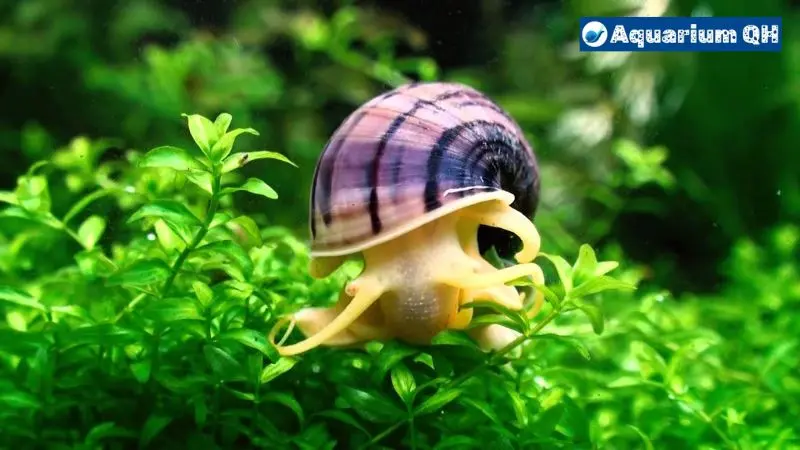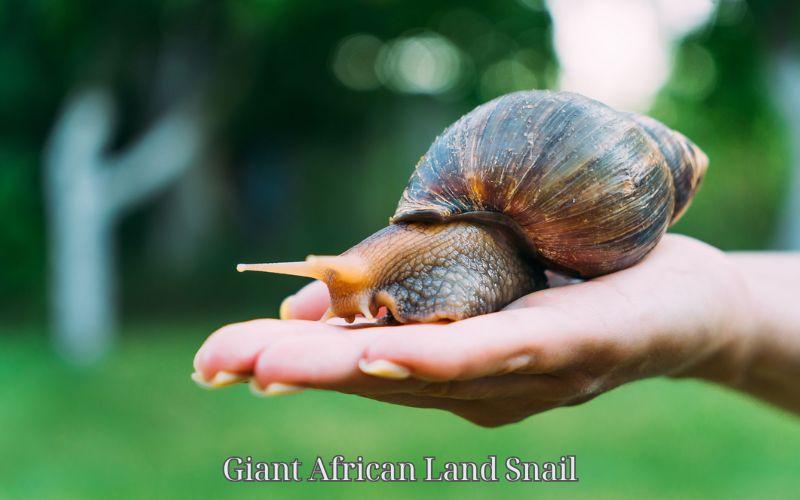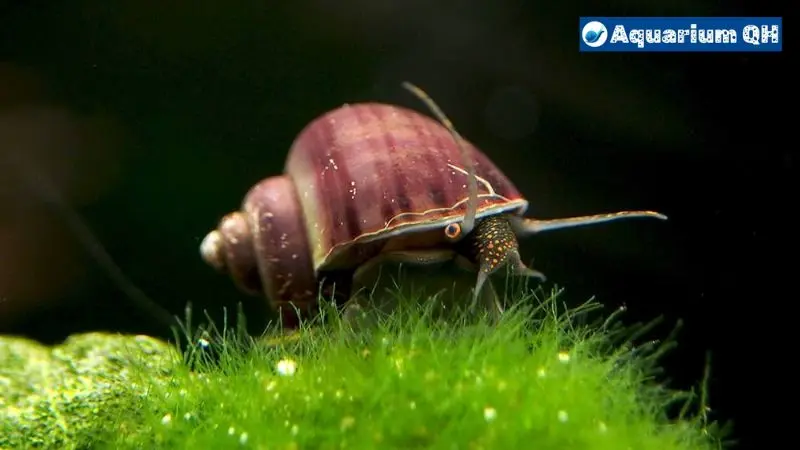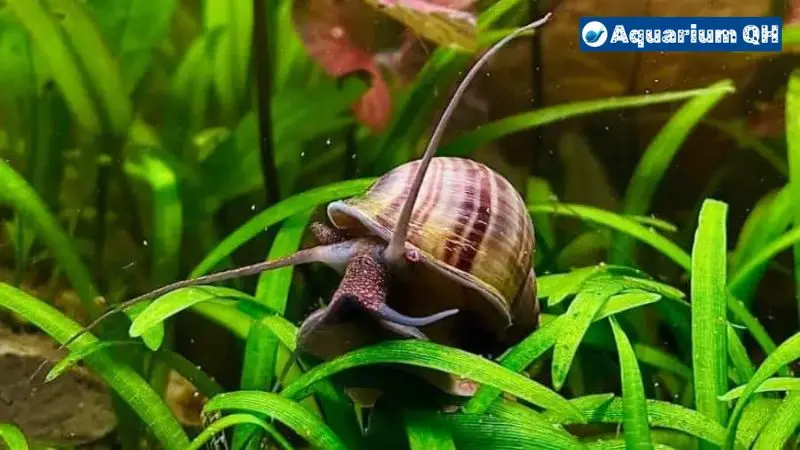What are mystery snails?
Mystery snails are a popular type of freshwater aquarium snail known for their attractive shells and peaceful demeanor. Their scientific name is Pomacea diffusa. They are also sometimes called apple snails, golden mystery snails, or spiketop snails.
Mystery snails have large, rounded shells that can grow up to 2 inches in diameter. Their shells come in a variety of colors like gold, ivory, blue, or black and have a smooth surface with horizontal grooves or “stripes” running across them. The soft fleshy parts of their body are typically dark gray or black.
Mystery snails are native to freshwater environments in South America, specifically the Amazon River basin. In the wild they inhabit slow-moving streams, swamps, and ponds with dense vegetation and muddy substrate. They require tropical aquarium temperatures between 70-80°F.
Ideal Habitat and Care

Mystery snails thrive in stable, warm, clean water conditions. Here are the ideal habitat parameters:
-
Temperature: 72-80°F is ideal. Avoid rapid temperature fluctuations.
-
Humidity: Moderate humidity around 60-70% is preferred. The tank should have a tight-fitting lid to contain moisture.
-
Tank Setup: A 10 gallon or larger aquarium with gentle water flow and lots of plants and decor to climb on. Sand or small gravel substrate.
-
Water Parameters: Mystery snails need clean, alkaline water with a pH between 7.6-8.4. Maintain low ammonia and nitrites. Perform regular partial water changes.
-
Food: Give them a varied diet of vegetables, algae wafers, calcium-rich pellets, and supplements. Avoid overfeeding.
Proper tank conditions, nutrition, and care will keep mystery snails active and healthy in their aquatic habitat. Monitor water quality, clean the tank regularly, and provide a stable environment.
Can mystery snails survive out of water?
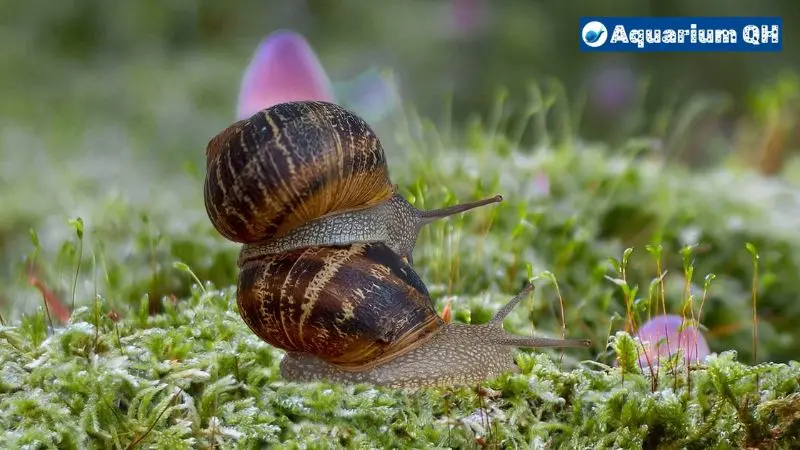
Mystery snails, also known as apple snails, are a popular freshwater aquarium snail. While they thrive in an aquatic environment, mystery snails can survive out of water for some time under the right conditions. However, there are risks associated with keeping them out of the water.
Mystery snails have a lung and gill allowing them to breathe air as well as take oxygen from the water. This means they can survive out of water for 1-2 days as long as their gills stay moist. If their gills completely dry out, the snail will die.
Keeping a mystery snail out of water for more than a day can be dangerous as the snail will become dehydrated. Dehydration leads to the snail retracting into its shell, mucus drying on the body, cracked skin, and lack of movement. Severe dehydration can kill a snail quickly.
Additionally, being out of water leaves the snail vulnerable. Without the protection of the aquarium, they are prone to trauma from falls or accidental damage. Temperatures fluctuations and dry air can also stress the snail.
In summary, while a mystery snail can survive briefly out of water under the right conditions, it is not recommended. Leaving the snail out too long risks severe dehydration and death. For their health and safety, mystery snails are best maintained in a fully aquatic environment.
Why might a mystery snail leave the water?
Mystery snails can end up outside of the water for a couple different reasons. One is by accident – these snails can sometimes get knocked or washed out of the tank if water conditions change rapidly. However, they may also intentionally leave the water for specific purposes:
-
Breeding – Mystery snails are amphibious and able to survive out of water for periods of time. As part of their breeding behavior, they will intentionally climb out of the tank to lay their eggs above the waterline. This prevents the eggs from getting wet and flooded.
-
Insufficient oxygen – If oxygen levels in the tank water drop too low, mystery snails may leave the water voluntarily in order to breathe air. This allows them to obtain sufficient oxygen until water conditions improve. Low oxygen can occur if there is inadequate surface agitation, overcrowding, or decomposing organic matter.
So in summary, mystery snails may find themselves above water due to accident or intentionally for breeding/breathing purposes. Knowing the reason can help assess whether intervention is needed to assist the snail.
Keeping your snail hydrated
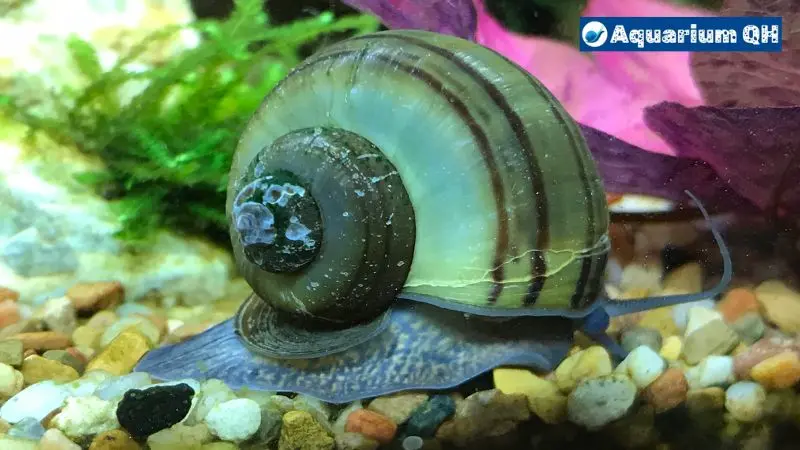
Mystery snails require moisture to survive, so keeping their environment humid is crucial. If your snail leaves the water, take steps to keep it hydrated:
-
Mist the aquarium regularly – Use a spray bottle to mist the tank several times a day. Focus on spraying decorations, climbing areas, and anywhere your snail likes to explore outside the water. The moisture will collect and drip down.
-
Provide wet paper towels – Soak paper towels in tank water and place them in areas where your snail travels. Re-wet the towels multiple times a day so they stay damp. You can also place wet moss or wet coconut fiber mats around the tank.
-
Spot clean any slime trails – Mystery snails leave a slime trail as they move around. Wipe away these trails and replace with wet paper towels to encourage the snail back into the water.
-
Keep the tank covered – Covering the tank will help retain humidity. Just be sure to allow some airflow and leave some areas uncovered.
With diligent moisture and humidity maintenance, you can keep your snail hydrated when it explores outside the water. Monitor your snail closely during this time.
Allowing controlled time out of water
Mystery snails are amphibious and can survive for short periods out of water. However, their gills must stay moist in order to breathe.
You can allow your snail limited supervised time out of its tank if you follow these guidelines:
-
Keep periods out of water very brief, under 30 minutes. Their gills will start to dry out after that time.
-
Make sure the surface is damp. Place the snail on a wet paper towel or spritz it with water frequently. Never place it on a dry surface.
-
Watch the snail closely the entire time it is out of water. Return it to the tank at the first sign of distress or retracting into its shell.
-
Handle the snail gently and avoid letting it drop or fall. Falls can crack the shell.
-
Only permit out-of-water time occasionally as a treat. The tank is the snail’s primary habitat.
With close supervision and limiting time outside the tank, you can allow your mystery snail a brief terrestrial adventure. Just be sure to keep its gills wet and watch for signs of dehydration or stress. Limit outings to rare, brief treats.
Signs of dehydration
Mystery snails can become dehydrated when out of water for too long. Some signs of dehydration in mystery snails include:
-
Retracted body – The snail will pull its body and head back into its shell in an attempt to conserve moisture. A severely dehydrated snail may retract fully into its shell and seal the opening with dried mucus.
-
Dried mucus – Mystery snails produce mucus to help them move and protect their soft bodies. When a snail becomes dehydrated, this mucus will become dry and flaky rather than appearing wet and slimy. The mucus may also turn white in color.
-
Inactivity – Dehydrated snails are sluggish and inactive, often not moving for long periods of time. They lack the moisture and energy to be active.
-
Loss of appetite – Snails require moisture to swallow and digest their food. A dehydrated snail will often refuse food and stop eating.
-
Cracked or damaged shell – Extreme dehydration can cause a snail’s shell to crack or become damaged without the mucus to protect it.
-
Discoloration – The snail’s body may appear dull, faded, or show darker pigmentation when dehydrated.
-
Limp foot – The snail’s foot may appear shriveled or deflated from lack of moisture. It may not fully extend from the shell.
Watch for these signs of dehydration in a mystery snail that has been out of water. Take steps to rehydrate the snail as soon as possible. Severe dehydration can be fatal if left untreated.
Treating a Dehydrated Snail
Mystery snails can become dangerously dehydrated if they spend too much time out of water. Their bodies are adapted to live in an aquatic environment. When deprived of water, they are unable to properly regulate moisture and hydration levels.
If you find your snail out of its tank and its shell and body appear dry, it needs to be rehydrated slowly and carefully. Avoid the instinct to dunk the snail back into the tank right away. This rapid rehydration could shock its system.
Instead, place the snail in a shallow container with a small amount of dechlorinated water. Over the course of several hours, slowly increase the water level. This gives the snail time to absorb the moisture at a safe pace.
You can provide moisture by misting the shell and body with dechlorinated water in a spray bottle. Go slowly and monitor for signs of recovery like the snail moving on its own or extending its body from its shell.
Once the snail seems rehydrated, rinse off the shell and place it back into the main tank. Keep a close eye on it for signs of stress like remaining retracted in its shell. With proper slow rehydration, a mystery snail can fully recover from dehydration.
Preventing Snails from Leaving the Tank
Keeping snails in their aquarium is vital for their health and safety. Here are some tips to prevent mystery snails from climbing out of the tank:
Use a Proper Lid
Mystery snails can climb surprisingly well and will search for escape routes. Make sure your tank has a tight-fitting lid to block any gaps. Avoid open-top tanks or flimsy plastic lids that a snail could dislodge. A glass canopy is ideal for containing snails while still allowing light and air flow.
Perform Regular Maintenance
Clean water quality prompts snails to stay submerged. Do weekly partial water changes and siphon debris from the substrate. Test ammonia, nitrites, and nitrates and keep them at safe levels. Replace filter media on schedule. Providing proper aquarium conditions removes the motivation for snails to wander.
Check Water Parameters
Improper water chemistry can drive snails to escape. Mystery snails prefer neutral to slightly alkaline conditions between 7.0-8.0 pH. Keep the temperature between 68°F and 84°F. Monitor hardness and aim for 5-12 dGH. Make adjustments if any parameters are outside the ideal ranges.
Give Them Company
Lonely, bored snails are more likely to roam. Keep them active and engaged with tank mates. Peaceful community fish and live plants provide sensory stimulation. Group multiple mystery snails together so they can socialize and explore together. A busy, enriched habitat holds a snail’s interest.
Address Aggressive Tankmates
Harassment from nippy fish or large crayfish can send snails on the move. Cichlids and goldfish may pester snails, as can freshwater shrimp and crabs. Either isolate the snail or remove the aggressive species. Make sure your community is compatible.
Prevent Overcrowding
An overstocked aquarium produces more waste and diminishes water quality. Avoid overloading the tank beyond capacity. Follow general stocking guidelines and limit tankmates appropriately. Overcrowding stresses mystery snails and spurs them to escape.
With proper precautions, mystery snails can enjoy their aquarium home safely. Check for escape routes, maintain excellent water quality, and keep their habitat engaging. A well-run tank will convince your snails to stay put.
When to seek veterinary care
Mystery snails can survive out of water for a period of time, but extreme dehydration can lead to health complications or even death. If your snail has been out of water for an extended period, it is crucial to seek veterinary care right away.
Signs that your snail needs to see an exotic veterinarian include:
-
The snail is retracted tightly into its shell and unresponsive. Gently prodding the foot with a toothpick elicits no reaction.
-
The shell and body appear extremely dry and shriveled.
-
There is a foul odor coming from the shell.
-
You observe labored breathing and raspy snail “coughs.”
-
Your snail is oozing mucus from its foot and mantle.
-
Its body hangs limply when you pick up the shell.
A severely dehydrated snail can develop problems like digestive tract impactions, respiratory infections, and sepsis. Only an experienced exotics vet can provide the advanced supportive care needed, which may include:
-
Injecting fluids under the skin or into the body cavity
-
Prescribing antibiotics and antifungals
-
Gently removing mucus plugs
-
Providing nutritional support
Do not delay if your snail appears extremely compromised after time out of water. With aggressive veterinary treatment, even a severely dehydrated mystery snail can potentially recover. But the longer it goes without proper hydration, the lower its chances. Please continue to follow Aquarium QH to find out interesting information.

